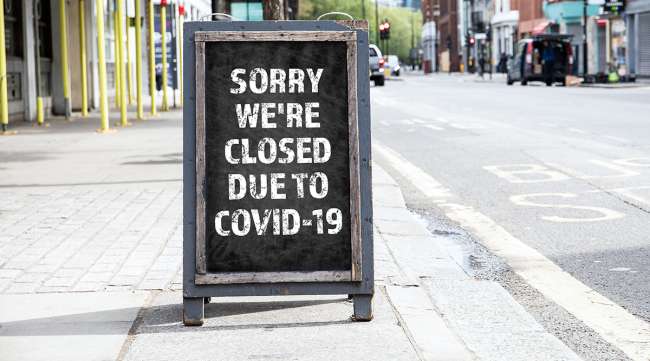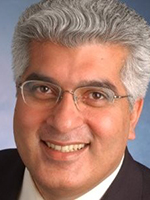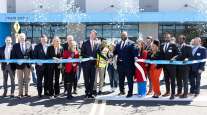Senior Reporter
Experts’ Pessimism Deepens Over Economy’s Health

[Ensure you have all the info you need in these unprecedented times. Subscribe now.]
The U.S. economy likely will shrink when first-quarter gross domestic product figures are released by the federal government’s Bureau of Economic Analysis on April 29.
That’s the assessment of Bob Costello, chief economist of American Trucking Associations. It marks the first time he’s forecast the possibility of negative growth in the first quarter as economic conditions have deteriorated rapidly across the country.
“I think now you get a negative number in the first quarter, maybe 2% down,” he said. “This just did not start out as an economic crisis; it has morphed into one. It started as a health crisis. And until you solve the health crisis, you really cannot truly go forward with solving the economic crisis.”

Costello
Most economists, including Costello, are forecasting the nation already is in a recession, and he believes the second-quarter GDP will show a contraction of 20% to 25% on an annualized basis.
But he believes the length of the recession will be determined by how long it takes to restart the economy and by the way the nation’s leaders carry out the plan.
“If we go back too soon and you start to see the economy move up, and only then to see the numbers of the virus go up again, and we have to go back to these stay-at-home orders, then a W-shaped recovery is the worst. That pushes back the recovery even longer,” Costello said. “That’s why this sort of forecasting the economy is so difficult now because we’re not medical experts. This is a medical issue. This is a health issue.”
The country’s leading medical authorities, including Dr. Anthony Fauci, director of the National Institute of Allergy and Infectious Diseases, also caution against restarting the economy too soon.
“The one way not to reopen the economy is to have a rebound that we can’t take care of,” Fauci said at a White House briefing April 22.
“We will have coronavirus in the fall,” he said. “I am convinced of that because of the degree of transmissibility that it has, the global nature. What happens with that will depend on how we’re able to contain it when it occurs.”
Meanwhile, the U.S. economy is showing more signs of distress. The Labor Department on April 23 said 4.42 million Americans filed for unemployment last week. Since the coronavirus pandemic triggered widespread shutdowns in mid-March, workers have filed more than 26 million unemployment insurance claims.
The Conference Board, a New York-based business and economic research organization, predicts a deeper decline.
“We forecast a 33% contraction in GDP in the second quarter, on an annualized basis, and no growth in the third quarter. While the fourth quarter will see a sizable rebound, the economy will contract by 6.5% for the entire year [compared to 2019]. A significant reduction in consumer spending is the primary driver of this weakness.”
Costello’s forecast is in line with the latest revised projections from FTR Intel, which says GDP will drop nearly 24% on a quarter-over-quarter seasonally adjusted annual rate basis, more than double the rate in its prior forecast.
“Most of all, our forecasts are sensitive to the duration of the current nationwide period of stay-at-home containment of the virus,” FTR said in its latest report. “We assume that a restart begins in May but that it will not be uniform. Moreover, we presume that the longer the containment period lasts, the slower the recovery will be as a result of the economic damage incurred.”
FTR forecasts economic activity may tick up in the third quarter, but there is a caveat: “The depth of the damage means that we likely will not return to the level of economic output we saw before the COVID-19 crisis until the first quarter of next year.”

Dhawan
Rajeev Dhawan, director of the Economic Forecasting Center at Georgia State University, said he is concerned that as the economy slows down, more workers in other sectors besides hotels, restaurants and tourism will feel the impact of layoffs.
“The initial layoffs were in hospitality and retail, but it’s going into other parts of the economy — manufacturing, office jobs. It’s turned out that doctors in private practice, lawyers in private practice, they have been hurt. That doesn’t happen in a typical recession,” he said. “It’s much worse than I thought.”
Dhawan said, based on the damage the pandemic has caused to the economy in the second quarter, he is not convinced a recovery will begin to start in the fall.
“I think the third quarter is beginning to look bad now,” he said. “In my forecast, the third quarter was already negative. But how much more negative it will be will depend upon what happens in June and July.”
Want more news? Listen to today's daily briefing:




